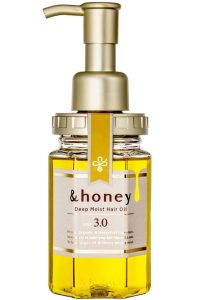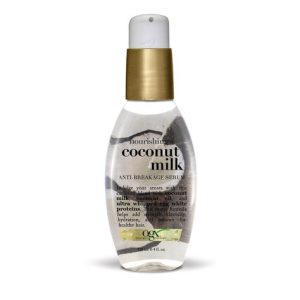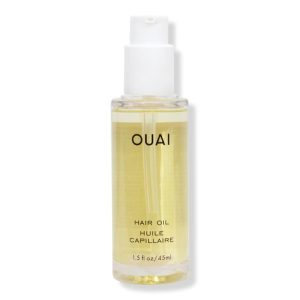
How to oil hair? Hair oiling is an ancient practice used to nourish and protect hair. It can be a beneficial addition to your hair care routine, especially if you have dry, damaged, or frizzy hair. This guide will take you through everything you need to know about hair oiling, from choosing the right one to the application process.
Benefits of Hair Oiling
Hair oiling offers a range of benefits for your hair:
Moisturizes dry hair:
Hair oils can help lock in moisture and prevent dryness. This is especially important for people with naturally dry hair or hair that has been damaged by styling or environmental factors.
Reduces frizz:
Hair oils can smooth down the hair cuticle, which helps to reduce frizz and make hair more manageable.
Promotes hair growth:
Some hair oils are believed to stimulate the scalp and promote hair growth. However, more research is needed to confirm this benefit.
Strengthens hair:
Hair oil can help to strengthen hair strands and prevent breakage.
Adds shine:
Hair oils can give your hair a healthy shine.

Choosing the Right Hair Oil
There are many different hair oils available, each with its own unique properties. Here are some popular choices:
- Coconut oils: Coconut oil is a versatile oil that can be used on all hair types. It is especially beneficial for dry hair as it is deeply moisturizing.
- Argan oils: Argan oil is rich in antioxidants and vitamins that can help to nourish and protect hair. It is a good choice for dry, damaged, or frizzy hair.
- Jojoba oils: Jojoba oil is similar to the natural oils produced by the scalp. It is a lightweight oil that is easily absorbed by the hair. Jojoba oil is a good choice for all hair types.
- Olive oil: Olive oil is a good source of moisture and can help to soften and condition hairs. However, it can be heavy for some hair types.
When choosing a hair oils, consider your hair type and your hair care goals. You can also experiment with different oils to find what works best for you.
How to Oil Your Hair
Here’s a step-by-step guide on how to oil your hair:
- Gather your supplies. You will need hair oil, a comb, a shower cap (optional), and a towel.
- Choose the right time. Hair oiling can be done before shampooing or as a leave-in treatment. If you have dry hair, you may want to oil your hair before shampooing to add extra moisture. If you have oily hair, you may want to use hair oils as a leave-in treatment on the ends of your hair only.
- Warm the oil (optional). Warming the oil sslightly can help it to penetrate the hair shaft more easily. However, be careful not to overheat the oil, as this can damage your hair. You can warm the oil by placing the bottle in a bowl of warm water.
- Apply the oil. Apply a small amount of oil to your scalp and hair. Start with a small amount and add more if needed. Use your fingers or a comb to distribute the oil evenly throughout your hair.
- Massage your scalp. Gently massage your scalp with your fingertips to stimulate blood circulation.
- Cover your hair (optional). You can cover your hair with a shower cap to help trap in the heat and moisture.
- Let the oil sit. Leave the oil on your hair for at least 30 minutes. You can leave it on overnight for a more intensive treatment.
- Wash your hair. Shampoo your hair thoroughly to remove the oil. You may need to shampoo your hair twice to remove all of the oil.
- Condition your hair. Apply conditioner to your hair as usual.

How Often Should You Oil Your Hairs?
The frequency of hair oiling will depend on your hair type and your hair care needs. If you have dry hairs, you may want to oil your hairs once or twice a week. If you have oily hairs, you may only need to oil your hair once a month.
Important Tips
- Start with a small amount of oils. You can always add more oil if needed, but it is difficult to remove too much oil from your hair.
- Be careful not to get oil on your face. Oil can clog your pores and lead to breakouts.
- Test it on a small area of your hair first. This will help to ensure that you are not allergic to the oil.
- If your hair feels greasy after oiling, you may have used too much oil. Try using it next time.

Scalp Massage for Hair Health
While hair oiling offers benefits, scalp massage can be another great addition to your hair care routine. Scalp massage can:
- Improve blood circulation to the scalp, which may promote hair growth
- Help loosen dandruff flakes
- Relieve stress, which can contribute to hair loss
Here’s a simple scalp massage routine you can incorporate:
- Use the pads of your fingers to gently massage your scalp in a circular motion.
- Start at your hairline and move towards the crown of your head.
- Apply even pressure and avoid scratching.
- Massage for a few minutes, focusing on areas that tend to get tense.
You can do a scalp massage while shampooing, conditioning, or even when your hair is dry.
Conclusion
Hair oiling can be a beneficial addition to your hair care routine, especially if you have dry, damaged, or frizzy hair. By following the tips in this guide, you can learn how to oil your hair safely and effectively.
Here are some additional things to keep in mind:
- Listen to your hair. If your hair feels greasy or weighed down after oiling, you may need to adjust the frequency or amount of oils you are using.
- Be patient. It may take some time to see the results of hair oiling.
- Experiment with different product. There is no one-size-fits-all approach to hair oiling. Experiment with different products to find what works best for your hair.
With a little practice, you can make hair oiling a regular part of your hair care routine and enjoy the many benefits it has to offer.







